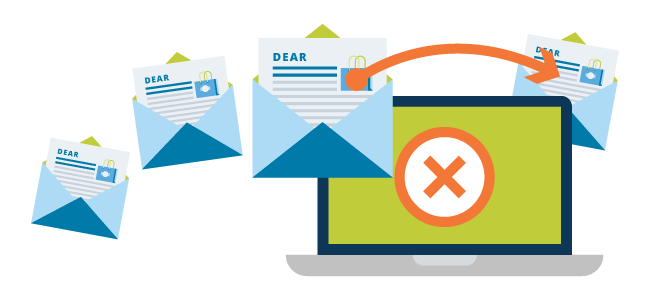
Introduction:
Unsubscribe rates can be a concern for any marketing team. When customers choose to opt-out of your email campaigns, it can impact your reach and overall campaign effectiveness. However, by implementing the right strategies, you can minimize unsubscribe rates and keep your audience engaged. In this blog post, we’ll explore some practical tips that marketing teams can follow to reduce unsubscribe rates.
- Segment Your Audience:
Segmenting your audience is crucial in delivering relevant content that resonates with specific groups of subscribers. By understanding their preferences, interests, and behaviors, you can tailor your messages accordingly and provide more value to each segment. - Set Clear Expectations:
When users subscribe to your emails or newsletters, clearly communicate what they should expect from your campaigns upfront. Be transparent about the type and frequency of content they will receive so that there are no surprises later on. - Personalize Your Emails:
Personalization is key in today’s marketing landscape. Use dynamic content techniques to personalize emails based on individual subscriber data like name, location or purchase history. This personalized touch helps create a stronger connection with subscribers and makes them feel valued as individuals. - Craft Engaging Subject Lines:
Subject lines play a significant role in determining whether recipients open an email or not. Grab attention with concise yet compelling subject lines that accurately reflect the content inside while piquing curiosity without resorting to clickbait tactics. - Provide Valuable Content:
Deliver valuable content consistently through well-crafted emails that educate, inform or entertain subscribers rather than just pushing sales pitches at every opportunity.Communicate industry insights,tips,tricks,special offers,and exclusive information relevant for each subscriber segment.You want readers eagerly anticipating future communications from you! - Optimize Email Design for Mobile Devices
With the majority of people accessing their emails via mobile devices,it’s essentialto ensure that your emails are mobile-friendly. Use responsive email templates that automatically adjust to different screen sizes, and test your designs across various devices and email clients to ensure a seamless experience for all subscribers. - Make Unsubscribing Easy:
While it may seem counterintuitive, making the unsubscribe process easy is vital in maintaining a positive user experience. Provide clear instructions and visible unsubscribe links in every email footer. Respect their decision promptly by removing them from your mailing list without delay or hassle. - Conduct A/B Testing:
Experiment with different elements of your campaigns through A/B testing. Test variations of subject lines, content layout, call-to-action placement, or even sending times to identify what resonates best with your audience. Continuously refine and optimize based on the insights gained from these tests. - Actively Seek Feedback:
Invite subscribers to provide feedback through surveys or polls periodically.This can help you better understand their needs,pain points,and preferences.Use this valuable information to further improve your campaigns and address any concerns raised.
Conclusion:
Reducing unsubscribe rates requires a thoughtful approach that focuses on delivering value, personalization,and respecting subscriber preferences.Marketing teams should segment audiences,set clear expectations,optimize content design for mobile devices,and actively seek feedback.Regularly analyze campaign performance metrics like open rates,click-throughs,and conversionsto gain insightsand make data-driven improvements.By implementing these strategies,you can foster stronger relationships with subscribers while minimizing unsubscribes,resulting in more effective marketing campaigns overall.